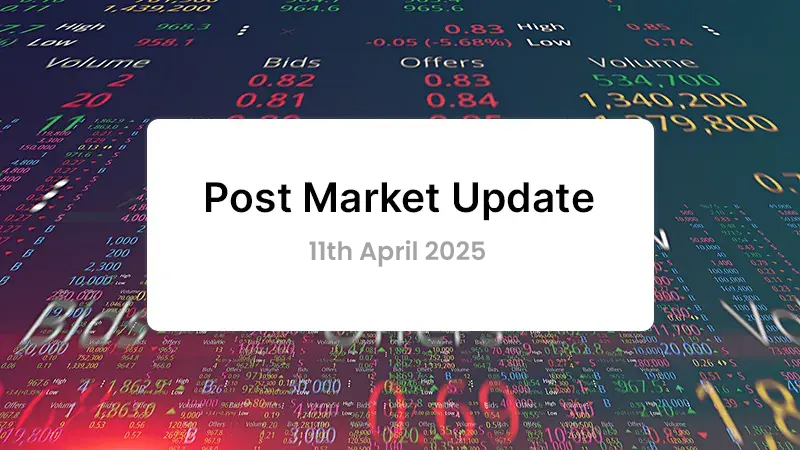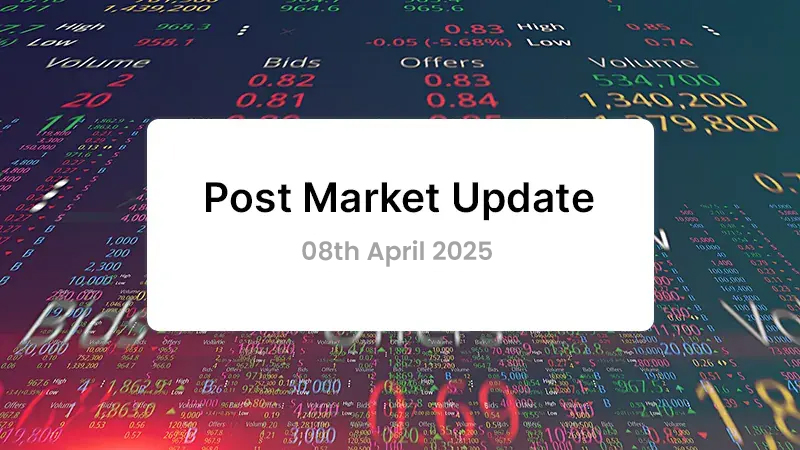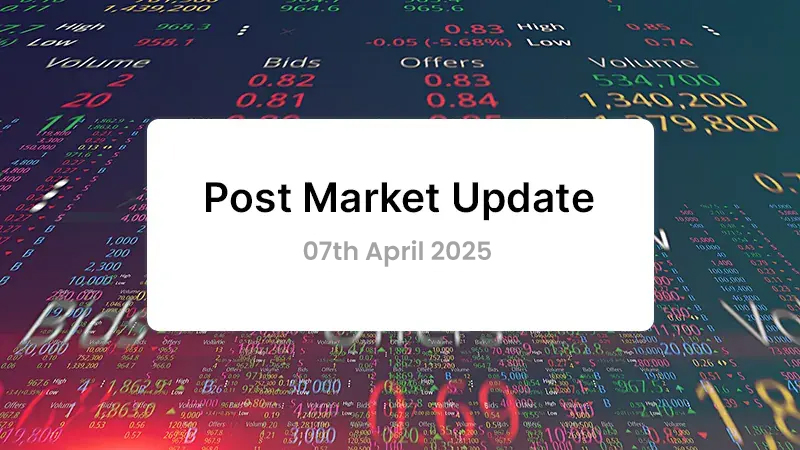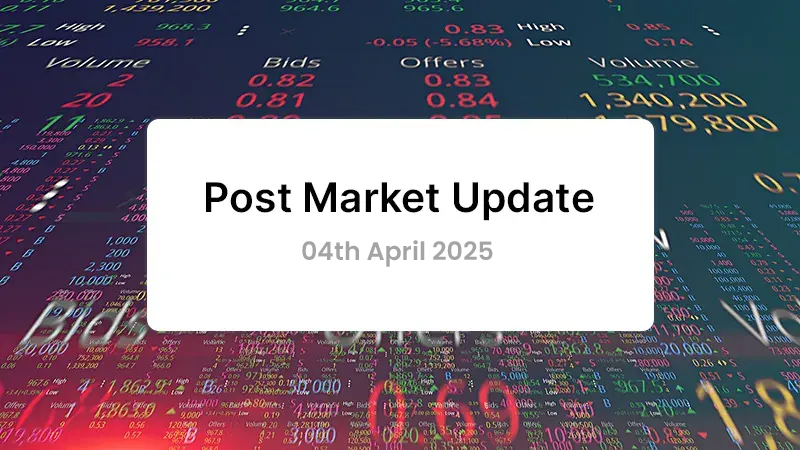
Global financial markets have been on a rollercoaster ride since early April following a dramatic and historic shift in US trade policy. On April 2, US President Donald Trump declared “Liberation Day” as he unveiled a sweeping regime of reciprocal tariffs—reshaping the nation’s trade relations with the world. However, just a week later, on April 9, a partial reversal was announced: a 90-day pause on these new tariffs for all nations except China. While this sparked an immediate rally in risk assets, the broader picture remains clouded with uncertainty and economic risk.
Relief Rally Follows Policy U-Turn
The pause on tariff hikes, except for China, helped ease some immediate market anxieties. Trump’s announcement that tariffs beyond the new 10% baseline would be held off until July for 59 countries brought relief to export-dependent economies, particularly in Asia and Europe. Vietnam, for example—where exports to the US account for nearly 30% of GDP—was facing a 46% duty, which now stands at a reduced 10%.
Global equities responded positively. On April 10, the S&P 500 surged over 9% and the tech-heavy Nasdaq soared more than 12%, marking one of their strongest sessions in years. European and Japanese equities joined the rally, buoyed by the hope that this pause could be a precursor to renegotiated trade terms with Washington.
China in the Crosshairs
Despite this temporary reprieve for most countries, the US doubled down on its hardline stance toward China. Tariffs on Chinese goods were raised to 125%, with an additional 20% levy linked to fentanyl-related imports. This move escalates tensions between the world’s two largest economies—who collectively account for nearly 43% of global GDP. A prolonged standoff between them poses a serious threat to global trade and investment flows.
Nonetheless, China’s tech sector bucked the trend, posting strong gains. Over the years, the country has become less reliant on foreign inputs, with domestic advancements in AI, EVs, and quantum computing giving it some insulation from trade headwinds. Markets are also speculating that a deal between the US and China might be in the works, given Trump’s own statements indicating openness to negotiation.
Inflation Risks and Policy Dilemmas
While markets rejoiced, economists are sounding a note of caution. Even with the partial rollback, average US tariffs are expected to remain elevated—Bloomberg Economics estimates they will stay around 24%, the highest level in over a century. The 125% duty on Chinese imports, in particular, is likely to feed inflation in the US, especially as it targets consumer-facing sectors.
Inflation expectations have already moved higher. US Treasury yields surged following the initial tariff announcement, with the 30-year yield touching 5% and the 10-year nearing 4.5% on April 9. The bond market reaction was so intense that many analysts believe it pressured the White House into pausing tariff hikes. Rising yields reflect market concerns that inflation may stay elevated, prompting the Federal Reserve to keep interest rates higher for longer.
Fed Chair Jerome Powell is now in a tight spot. After misreading inflation trends during the pandemic, he is unlikely to ease policy prematurely. If inflation persists due to trade-induced supply shocks, the Fed could be forced to delay rate cuts, even as growth slows—a classic stagflation dilemma.
Implications for Consumers and Corporates
US consumers, who power nearly 70% of the country’s GDP, are caught between conflicting impulses. On one hand, the relief rally may lift sentiment and drive spending. On the other, lingering inflation concerns and geopolitical uncertainty could prompt households to save more cautiously, dampening consumption over the medium term.
Corporate America is also under the spotlight as Q1 2025 earnings season kicks off. Financial giants like JPMorgan, Goldman Sachs, and Citigroup will report in the coming weeks, and investors will closely watch management commentary for insights on how the new trade regime may impact future performance. According to consensus estimates, the financial sector is expected to post a modest 2.3% year-on-year growth in Q1 earnings.
Looking Ahead
Despite the volatility, some bright spots are emerging. The willingness of global players—especially Japan, Europe, and India—to engage the US in trade negotiations may ultimately yield favorable deals that enhance US access to foreign markets. The EU has already proposed zero tariffs on industrial goods and cars in exchange for a more balanced relationship, while Japan has initiated trade discussions directly with Washington.
From an investment standpoint, this calls for a balanced approach. The recent episode highlights the importance of geographic diversification in portfolios. Investors overly concentrated in domestic equities may be exposed to unnecessary macro risk, while those diversified across regions and asset classes may fare better through volatile periods.
Final Thoughts
While the temporary pause in tariffs has provided a much-needed breather for global markets, the broader direction of US trade policy remains uncertain. The economic fundamentals have not materially changed—risks of slower growth, elevated inflation, and geopolitical strain still linger. Investors should tread cautiously, focusing on asset allocation and diversification to navigate the choppy waters ahead.
Market this week
| 07th Apr 2025 (Open) | 11th Apr 2025 (Close) | %Change | |
| Nifty 50 | ₹ 21,758 | ₹ 22,829 | 4.9% |
| Sensex | ₹ 71,450 | ₹ 75,157 | 5.2% |
Source: BSE and NSE
- Indian benchmark indices ended the truncated and volatile week on April 11 with marginal losses, as concerns over the escalating US tariff war weighed on investor sentiment. However, an unexpected 90-day pause on reciprocal tariffs announced by the US President provided some relief on the final trading day, limiting the overall downside.
- Sectoral performance was mixed during the week. The Nifty Realty index declined by 4 percent, while the Nifty Metal index was down 3 percent. The Nifty IT index fell by 2.3 percent, and the Nifty PSU Bank index lost 1.5 percent. On the other hand, defensive sectors saw buying interest, with both the Nifty Consumer Durables and FMCG indices gaining more than 3 percent each.
- Foreign Institutional Investors (FIIs) continued their selling spree, offloading equities worth ₹20,911.30 crore over the week. In contrast, Domestic Institutional Investors (DIIs) provided strong support to the market, buying equities worth ₹21,955.62 crore during the same period.
Weekly Leaderboard
| NSE Top Gainers | NSE Top Losers | ||||
| Stock | Change (%) | Stock | Change (%) | ||
| Hindustan Unilever | ▲ | 5.4% | Trent Ltd | ▼ | -14.1% |
| Titan Company | ▲ | 5.2% | Tata Steel | ▼ | -5.0% |
| Nestle India | ▲ | 4.4% | L&T | ▼ | -4.4% |
| Power Grid Corp | ▲ | 3.5% | Tata Motors | ▼ | -3.1% |
| Jio Financial Services | ▲ | 3.5% | Tech Mahindra | ▼ | -2.9% |
Source: BSE
Stocks that made the news this week:
Mutual fund stocks rallied on April 11 after AMFI reported strong equity fund inflows for March, despite global uncertainty. SIP inflows remained resilient at ₹25,926 crore, marginally down from February. Shares of Nippon Life India AMC and HDFC AMC surged nearly 5 percent each, while Aditya Birla Sun Life AMC also gained. Equity mutual fund inflows dropped 14 percent month-on-month to ₹25,082 crore, primarily due to fears surrounding the US’s proposed reciprocal tariffs, although benchmark indices had posted robust 6 percent gains during the month.
Hindustan Aeronautics Ltd (HAL) rose nearly 3 percent after Motilal Oswal initiated coverage with a ‘Buy’ rating and a price target of ₹5,100. The brokerage cited HAL’s leadership in defence aviation, strong order book of ₹1.8 lakh crore, and a significant ₹6 lakh crore pipeline opportunity as key growth drivers amid rising government defence spending.
Meanwhile, broader markets staged a strong rebound after US President Trump paused tariffs for 90 days on most countries, excluding China. This triggered a sharp rally in Indian equities with the Sensex rising over 1,300 points and Nifty gaining nearly 2 percent. Smallcap stocks saw robust gains, led by Welspun Living (up 9%), Aarti Industries and PG Electroplast (up 8% each), along with strong moves in names like Inox Wind, Laurus Labs, PNB Housing, and Kaynes Tech.














